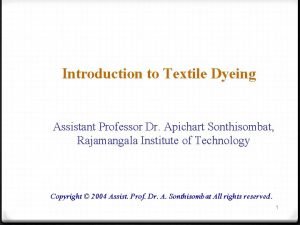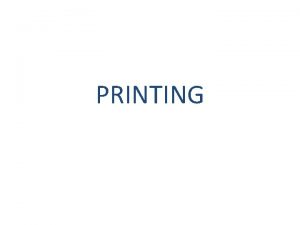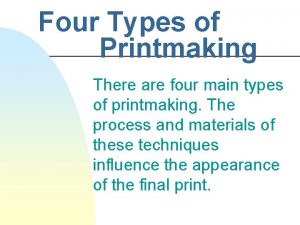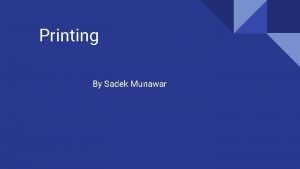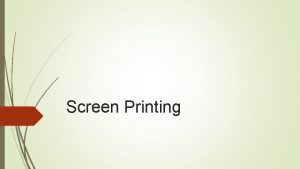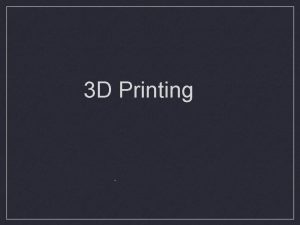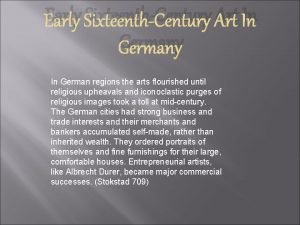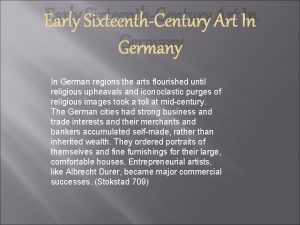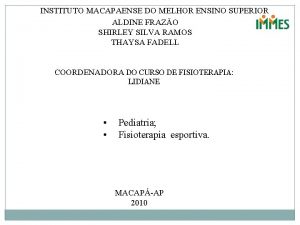The Aldine octavos and sixteenthcentury paper for printing
















- Slides: 16

The Aldine octavos and sixteenth-century paper for printing David Shaw Seminar on textual bibliography for modern foreign languages Monday, 5 June 2017 British Library

Aldine octavos ▪ 1501 : Aldus Manutius’s innovations ▪ plain-text editions of classical authors (Latin, Greek and Italian) ▪ in octavo format ▪ in Italic type ▪ new page size, giving tall, slim pages

Medieval paper ▪ The Bologna Stone ▪ a late fourteenth-century limestone slab (now in the Museo Civico Medievale of Bologna), which has the dimensions of four categories of paper carved into it ▪ Imperialle imperial 68 x 48 cm ▪ Realle royal 42 x 60 cm ▪ Meçane median 35 x 50 cm ▪ Reçute chancery 31· 5 x 46 cm Neil Harris, http: //ihl. enssib. fr/en/paper-and-watermarks-asbibliographical-evidence/bibliographical-annotations-andorientations

Medieval paper (2) The shape of the sheet of paper ▪ Divide the height of the sheet by the width : ▪ Ratio of height to width is approximately 1 : 1· 41 ▪ This is the same as 1 : square root of 2 (1· 4142135623731) ▪ The same ratio as the modern A 1, A 2, A 3, A 4, A 5 papers

Medieval paper (3) ▪ When the sheet is folded, the proportion remains roughly the same (in folio, quarto, octavo, etc. but not duodecimo) ▪ Just like modern A 3, A 4, A 5 paper ▪ A chancery sheet (ratio 1 : 1· 46) gives an octavo page of 15· 8 x 11· 5 cm (uncut), (ratio 1 : 1· 38)

Paul Needham’s work on early printing paper ▪ Cataloguers should record page dimensions and should record the sheet size calculated from the format. ▪ The Needham Calculator : ▪ https: //schoenberginstitute. org/2017/01/30/the-needham-calculator -1 -0 -and-the-flavors-of-fifteenth-century-paper/ ▪ http: //www. needhamcalculator. net/

More paper sizes As well as Imperial, Royal, Median and Chancery papers, Needham identifies some intermediate sizes used in incunable printing: ▪ Super-royal ▪ Super-median ▪ Super-chancery These are wider, with a height-to-width ratio of 1 : 1· 33 and do not preserve the ratio when folded.

The paper for the Aldine octavos ▪ The Aldine sheets are squarer than standard, with a height-to-width ratio of 1 : 1. 2 ▪ When folded for octavo, the uncut page is typically taller and slimmer, with a ratio 1 : 1. 6 Sheet Aldine Super-chancery Chancery height 17· 5 17· 0 15· 8 width 10· 5 11· 5 ratio 1· 67 1· 48 1· 37

The 1501 Aldine Juvenal and the binder height width ratio uncut 17· 5 10· 5 1· 67 17 10· 5 1· 62 (NY, Morgan) 16 9· 5 1· 68 (British Library) 15· 5 9· 5 1· 63 (NY, PL 1) 15· 5 9· 5 1· 63 (NY, PL 2) 15· 5 9· 5 1· 63 (Oxford, Magdalen) 15 9· 3 1· 67 (Oxford, Bodleian)

Copying the Aldine octavos By 1501/1502, printers in Lyons were issuing counterfeit editions of the Aldine octavos Juvenal: Aldus, 1501 [Lyon, 1501/1502] [Lyon, 1504? ] [Lyons, 1506? ]

Aldine counterfeits : What to copy? ▪ Texts: line-by-line, page-for-page facsimile ▪ Type: a close copy of the Aldine italic type* ▪ Paper: the same tall narrow page size as the Aldines * David J. Shaw, ‘The Lyons counterfeit of Aldus's italic type: a new chronology’, In: The Italian book 1465– 1800: Studies presented to Dennis E. Rhodes on his 70 th birthday, edited by Denis V. Reidy, The British Library, London, 1993, pp. 117– 133.

Narrow median paper ▪ Sheet size : 42 x 35 cm ▪ Ratio : 1· 2 ▪ Octavo page size : 17· 5 x 10· 5 cm ▪ Ratio : 1· 67 (or 1 : 1· 63 when trimmed by 1 cm)


The Lyons Aldine counterfeits ▪ A sample of 27 copies of Lyons Aldine counterfeits, 1501/1502 – 1504/1505 ▪ height-to-width ratios (narrow median paper): Average : Smallest : Largest : (Chancery paper: 1 : 1· 65 1 : 1· 50 (15· 2 x 10· 1 cm) 1 : 1· 83 (16· 5 x 9· 0 cm) 1 : 1· 41)

16 th-century octavo editions of Juvenal ▪ 60 octavo editions of Juvenal ▪ Date range : 1501 to 1599 ▪ Average height-to-width ratio : 1· 57 (= narrow median paper) ▪ Range : from 1 : 1· 41 – 1 : 1· 43 (chancery and super-median paper) up to 1 : 1· 75 (narrow median paper) ▪ 90% are printed on narrow median or narrow super-median paper) Source: http: //juvenal. referata. com/wiki/Narrow_median_octavos

David Shaw Web site : www. djshaw. co. uk Email : david@djshaw. co. uk Blog: https: //blogdjshaw. wordpress. com/ This file: docs. djshaw. co. uk/BL-Seminar_2017 -06_DJS. pptx
 Alfine hac
Alfine hac Aplus aldine
Aplus aldine Aplus aldine
Aplus aldine English general paper paper 2 comprehension
English general paper paper 2 comprehension General paper essay topics
General paper essay topics Printing and dyeing assistant
Printing and dyeing assistant Printing and publishing industry
Printing and publishing industry Types of print making
Types of print making Formuö
Formuö Typiska novell drag
Typiska novell drag Tack för att ni lyssnade bild
Tack för att ni lyssnade bild Vad står k.r.å.k.a.n för
Vad står k.r.å.k.a.n för Varför kallas perioden 1918-1939 för mellankrigstiden?
Varför kallas perioden 1918-1939 för mellankrigstiden? En lathund för arbete med kontinuitetshantering
En lathund för arbete med kontinuitetshantering Adressändring ideell förening
Adressändring ideell förening Tidböcker
Tidböcker A gastrica
A gastrica





